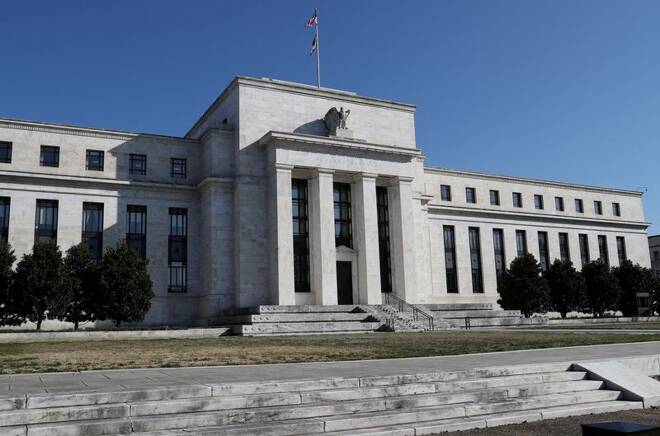Advertisement
Advertisement
U.S. labor market powers ahead with strong job gains despite recession fears
By:
By Lucia Mutikani WASHINGTON (Reuters) - U.S. employers likely hired the fewest workers in 14 months in June, but the jobless rate probably remained near pre-pandemic lows, underscoring labor market tightness that could encourage the Federal Reserve to deliver another 75-basis-point interest rate increase later this month.
By Lucia Mutikani
WASHINGTON (Reuters) – U.S. employers hired far more workers than expected in June and continued to raise wages at a steady clip, signs of persistent labor market strength that give the Federal Reserve ammunition to deliver another 75-basis-point interest rate hike this month.
The Labor Department’s closely watched employment report on Friday also showed no indication that companies were reducing hours for workers. The number of people working part time for economic reasons fell to its lowest level in nearly 21 years.
Strong job growth allayed fears of an imminent recession and offered hope that any downturn would be mild.
“If you’re looking at this report for signs we’re already in a recession, you’re likely to come up blank,” said Nick Bunker, an economist at Indeed in Washington. “For now, employers continue to hire a considerable number of workers at higher wages. That’s something to celebrate.”
The survey of establishments showed nonfarm payrolls increased by 372,000 jobs last month. It was the fourth straight month of job gains in excess of 350,000 and left employment 524,000 jobs below its pre-pandemic level. The private sector has recouped all the jobs lost during the COVID-19 pandemic and employment is 140,000 higher than in February 2020. Government employment remains in the hole by 664,000.
Economists polled by Reuters had forecast 268,000 jobs added, with estimates ranging from as low as 90,000 to as high 400,000. June’s broad increase was led by the professional and business services industry, which added 74,000 jobs. Leisure and hospitality payrolls rose by 67,000 jobs. But employment in the industry remains down by 1.3 million since February 2020.
There were also strong payrolls gains in the healthcare, information as well as transportation and warehousing industries. Manufacturing added 29,000 jobs and has recouped all the jobs lost during the pandemic. Construction payrolls increased by 13,000 jobs.
The economy created 2.74 million jobs in the first half. President Joe Biden welcomed the strong employment gains.
“No country is better positioned than America to bring down inflation, without giving up all of the economic gains we have made over the last 18 months,” Biden said in a statement.
Stocks on Wall Street fell. The dollar slipped against a basket of currencies. U.S. Treasury yields rose.
A DIFFERENT RECESSION The labor market is strong despite gross domestic product contracting in the January-March quarter. A raft of tepid reports ranging from May consumer spending to housing and manufacturing have left most economists expecting that GDP declined again in the second quarter.
With the labor market tight, however, a second straight quarterly GDP contraction would not mean a recession.
“But if the U.S. economy is in or about to enter a recession, it would be a recession of a vastly different nature than that of other historical downturns,” said Noah Williams, an adjunct fellow at the Manhattan Institute.
“Recessions have largely been characterized by declines in employment, typically starting with slowed hiring by businesses. Such slowing has yet to happen on a broad scale.”
The Fed wants to cool demand for labor to help bring inflation down to its 2% target. The U.S. central bank in June raised its benchmark overnight interest rate by three-quarters of a percentage point, its biggest hike since 1994. Markets overwhelmingly expect the Fed, which has increased its policy rate by 150 basis points since March, to unveil another 75-basis-point hike at its meeting later this month.
Inflation data for June next Wednesday, which is expected to show consumer prices accelerating, is also seen giving policymakers more cover to raise borrowing costs further.
Average hourly earnings increased 0.3% in June after gaining 0.4% in May. That lowered the year-on-year increase to 5.1% from 5.3% in May. Despite the deceleration, wage pressures remain robust, with average hourly earnings for production workers increasing a solid 0.5%. They were up 6.4% year-on-year.
With 11.3 million job openings at the end of May and nearly two jobs for every unemployed person, wages will continue their march higher.
The average workweek held steady at 34.5 hours. Details of the household survey from which the unemployment is derived were mixed. The unemployment rate was unchanged at 3.6% for a fourth straight month as 353,000 people left the labor force, nearly half of them women. As a result, the labor force participation rate, or the proportion of working-age Americans who have a job or are looking for one, edged down to 62.2% from 62.3% in May.
Household employment declined by 315,000 jobs. But the number of people working part time for economic reasons fell by 707,000 to 3.6 million, the lowest since August 2001.
A broader measure of unemployment, which includes people who want to work but have given up searching and those working part-time because they cannot find full-time employment, dropped to 6.7%. That was the lowest since the government started tracking series in 1994 and was down from 7.1% in May.
(Reporting by Lucia Mutikani; Editing by Chizu Nomiyama)
About the Author
Reuterscontributor
Reuters, the news and media division of Thomson Reuters, is the world’s largest international multimedia news provider reaching more than one billion people every day. Reuters provides trusted business, financial, national, and international news to professionals via Thomson Reuters desktops, the world's media organizations, and directly to consumers at Reuters.com and via Reuters TV. Learn more about Thomson Reuters products:
Advertisement
